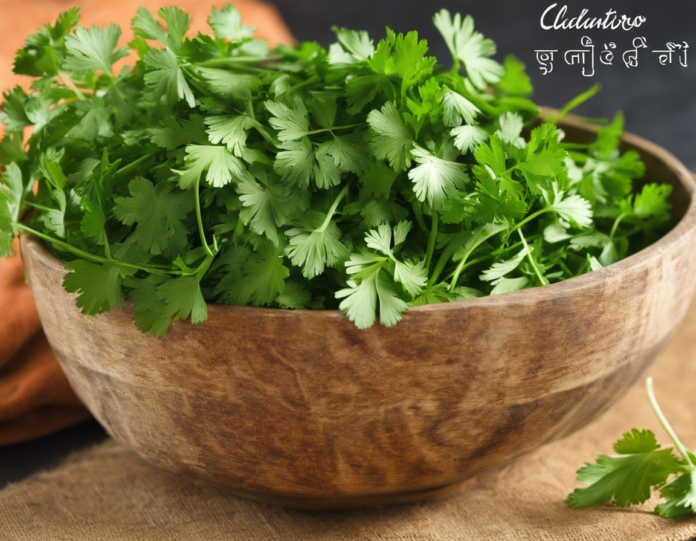Coriander, or cilantro as it is commonly known in Hindi, is a versatile herb that is widely used in Indian cuisine. Known for its distinct citrusy flavor and aroma, cilantro adds a burst of freshness to any dish it is added to. Let’s delve into everything you need to know about cilantro – from its health benefits to culinary uses and more.
What is Cilantro?
Cilantro refers to the leaves of the coriander plant (Coriandrum sativum). It is often confused with coriander seeds which are the dried fruits of the same plant. The leaves are flat and delicate with a pungent odor and are widely used in cooking.
Nutritional Value of Cilantro
Cilantro is not only packed with flavor but also with essential nutrients. It is a good source of vitamin K, vitamin A, and antioxidants. It also contains small amounts of calcium, potassium, and folate.
Health Benefits of Cilantro
– Rich in antioxidants: Cilantro is known for its antioxidant properties that help in neutralizing harmful free radicals in the body.
– Aids digestion: The herb is believed to have digestive benefits and can help alleviate indigestion and bloating.
– May lower blood sugar levels: Some studies suggest that cilantro may help in lowering blood sugar levels.
– Anti-inflammatory properties: Cilantro contains anti-inflammatory compounds that may help in reducing inflammation in the body.
Culinary Uses of Cilantro
Cilantro is a staple in Indian, Mexican, and Thai cuisine. It is used in a variety of dishes including curries, salsas, chutneys, and salads. The leaves can be used both as a garnish and as a key ingredient in dishes like coriander chutney or dhania chicken.
How to Select and Store Cilantro
When buying cilantro, look for bright green leaves without any yellow or wilting parts. To store cilantro, trim the stems and place the bunch in a glass of water, covering it with a plastic bag and storing it in the fridge. Alternatively, you can chop the leaves and freeze them in ice cube trays with water for future use.
Cilantro in Ayurveda
In Ayurveda, cilantro is believed to have cooling properties and is used to balance pitta dosha. It is often used in detoxifying Kadha or herbal teas and in dishes to cool the body during the hot summer months.
Growing Cilantro at Home
Cilantro is easy to grow at home either in pots or in the garden. It thrives in well-drained soil and requires ample sunlight. Sow the seeds directly in the soil and keep them well watered. You can start harvesting the leaves once the plant is a few inches tall.
FAQs about Cilantro
Q: Can cilantro be substituted with parsley in recipes?
A: While parsley has a milder flavor, it can be used as a substitute for cilantro in recipes if you are not fond of its taste.
Q: Why does cilantro taste like soap to some people?
A: The aversion to cilantro’s taste is linked to genetics, where some people perceive a soapy or metallic taste due to certain olfactory-receptor genes.
Q: Are coriander leaves and cilantro the same thing?
A: Yes, coriander leaves and cilantro refer to the same herb, differing in terminology based on regions.
Q: Can cilantro help in detoxification?
A: Cilantro is believed to have detoxifying properties and is often used in detox diets and drinks.
Q: How can I keep cilantro fresh for longer?
A: To keep cilantro fresh, store it in the refrigerator in a glass of water, changing the water every few days, or freeze chopped cilantro in ice cube trays.
Cilantro is not just a flavorful herb but also a powerhouse of nutrients that can enhance the taste and nutritional value of your meals. Including cilantro in your diet can not only add a burst of freshness to your dishes but also provide a range of health benefits. Whether you sprinkle it on top of your curry or blend it into a chutney, cilantro is a must-have herb in your kitchen.

